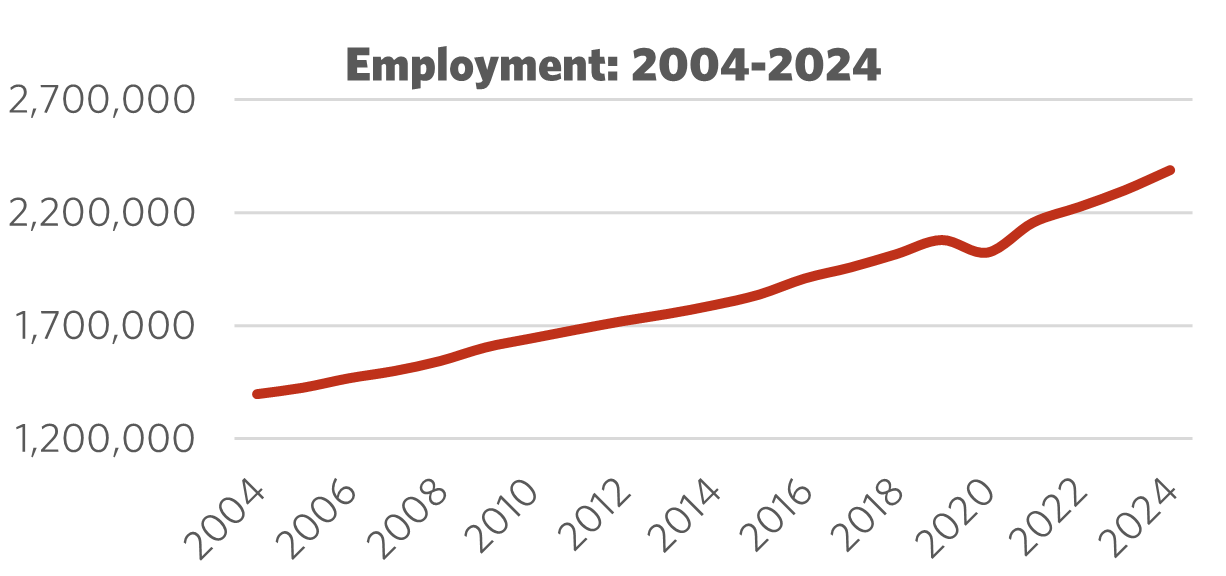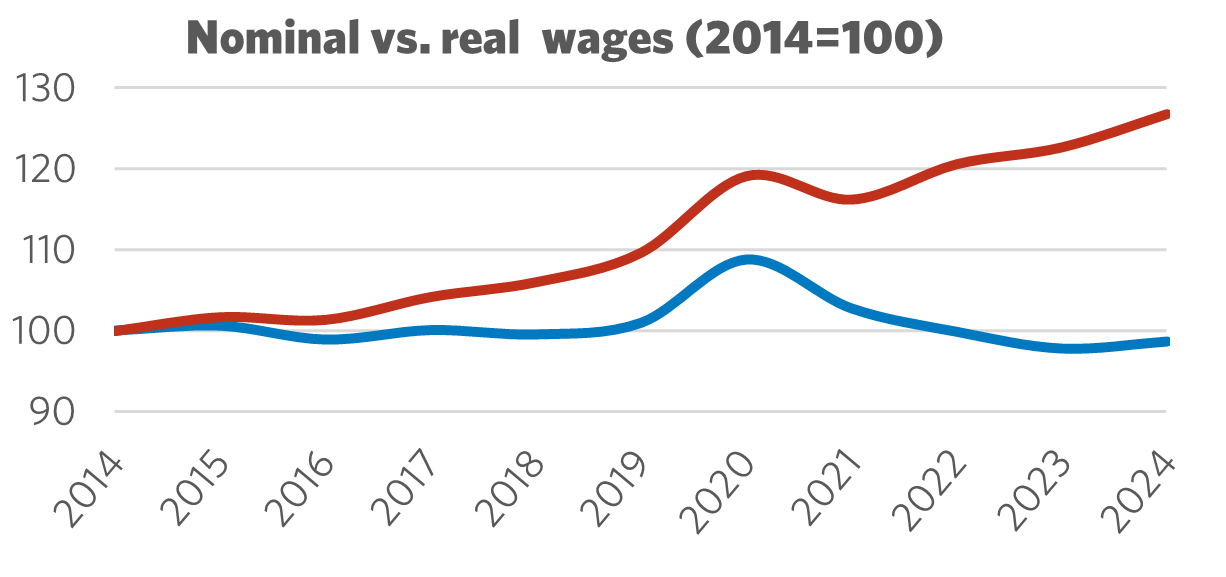Sector Facts and Figures
| Sector Facts and Figures | |
| OUTPUT | |
Sector GDP Share of Canadian GDP | $182.7 billion 9.2% |
| EMPLOYMENT | |
Total Employment 10-year change | 2,385,550 +33.2% |
| Percentage of part-time workers | 20.2% |
| Average hourly wage | $35.34/hr |
10-year real wage change | -1.4% |
| Average Work Hours/Week | 31.0 |
| ENVIRONMENT | |
Greenhouse Gas Emissions (2022) 10-year change Share of Canadian industry total | 1,820kt -13.8% 0.06% |
| LABOUR | |
| Union Coverage Rate | 54.0% |
| Unifor Members in the Industry | 35,000 |
| Share of Total Unifor Membership | 10.9%
|
| Number of Unifor Bargaining Units | 350 |
Unifor in the Health Care and Social Services Industry
Unifor’s presence in the sector has expanded in recent years. This sector encompasses 35,000 members, representing just under 11% of Unifor’s total membership, distributed across more than 350 bargaining units, with heavy regional concentration in Ontario and Nova Scotia. Unifor’s health care members work in a range of settings, including hospitals, long-term care homes, retirement homes, emergency paramedic service providers, home care providers and clinics. Unifor’s social service members provide services focused on women, Indigenous communities, adults with disabilities, youth, and child care.
Some segments of the sector are publicly-funded and employers are public entities, including hospitals and emergency services. Other segments of the sector are comprised of private employers who have contracts with government bodies (e.g., home care), receive government subsidies for part of their operations (e.g., long-term care homes and social services) or are completely privately funded (e.g., retirement homes).
Unifor’s hospital bargaining units vary in size – from as small as two members, up to 1,750 members. In long-term care, bargaining units also range in size, but some units share a common (often corporate or private) employer. In the social services, most bargaining units are part of small workplaces where the operations are heavily dependent on direct government funding.
| Select Unifor Employers | Approx. # Members |
| Extendicare | 3,100 |
| St. Joseph’s Health Care (London) | 1,750 |
| London Health Sciences | 1,650 |
| Northwood Care | 500 |
Current Conditions
Health care and social services are one of the largest and most economically significant sectors in Canada. The important contributions made by workers in this sector have been widely recognized since the onset of the COVID-19 pandemic. More than a million people are employed in hospitals, long-term care facilities, retirement homes, and residential care facilities alone.
While the pandemic has abated, hospitals, long-term care facilities, and retirement homes are struggling to fill existing job vacancies while, at the same time, hiring additional employees to meet the needs of new health care programming. Stress and burnout rates remain high among health care professionals, causing many to exit the field permanently or take a much-needed leave to recuperate. Health care costs are rising at a rapid pace, often exceeding funding increases allocated by various levels of government. These challenges necessitate that health care providers adapt and innovate to maintain the quality of care provided, but also that government steer additional resources to maintain a universally accessible, public health and social services sector, delivered alongside enforceable minimum standards of care. Private and for-profit service providers are playing an increasingly prominent role in the Canadian health sector, raising concerns over service quality, affordability and equity.
Social service agencies are grappling with an increased demand for their services. Despite the value workers in social services add to the Canadian economy, the various agencies they work for are seeing their funding levels plateau. Workers in the system are often left doing more with less, leaving many feeling stressed, anxious, and burnt out.
Health care and social services typically receive funding from the federal, provincial, and territorial governments. In recent years, the federal government signed 10-year bilateral funding agreements with the provinces and territories, while providing 5% increases in the Canada Health Transfer (CHT) for the first five years and targeted funding for strategic priorities. This much-needed infusion will help provincial levels of government funded health care, but it falls short of what is needed to stabilize the system as a whole.

Figure 1: Employment 2004 – 2024

Figure 2: Nominal vs. Real Wages (2014 = 100)
Moving Forward: Developing the Health Care and Social Services Industry
The federal government recently introduced the Canadian Dental Care Plan (CDCP) covering Canadians with net family income below $90,000 and without health plans, as well as the first phase of a pharmacare program that covers drugs and related products for contraception and treatment of diabetes. However, the federal government must deliver on the promise to implement a fully comprehensive, universal pharmacare program.
Provinces and hospitals in particular continue to struggle to keep up with the demands of an expanding and aging population with current funding allocations. As a result, many are turning to private sector service providers to fill in the gaps of the public system. In recent years, several provinces have significantly expanded the provision of various surgeries and diagnostic procedures to third parties who operate on a private, for-profit basis. Meanwhile, the majority of long-term care services continue to be provided by private companies who prioritize profit over fair compensation for workers and better care for residents.
Across all sub-sectors of health – especially in hospitals and long-term care facilities – employers are turning to staffing agencies to fill in holes in their workforce. In the health care sector, agency use across the country has experienced a six-fold increase since 2020/21, costing Canadian taxpayers upwards of $1.5 billion for the fiscal year 2024. Continued reliance on staffing agencies is a costly, ineffective means to address the staffing crisis. Enhancing the overall compensation package of health care workers and encouraging new and young Canadians to enter the health care field is necessary to stabilize the workforce in this sector.
Sector Development Recommendations
- Expand beyond the first phase of the federal pharmacare program to establish a fully comprehensive, universal pharmacare program as soon as possible.
- End the use of private, for-profit staffing agencies across all sub-sectors of health and social services.
- Address recruitment and retention issues across all health and social service sub-sectors by respecting workers and ensuring that they are compensated fairly.
- End for-profit long-term care and enforce mandatory care standards across the sector.
- Enforce the Canada Health Act and prevent any further privatization of health care services.


